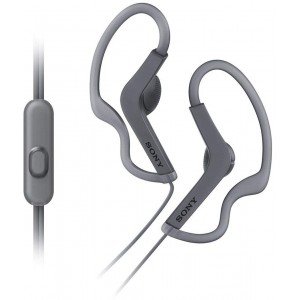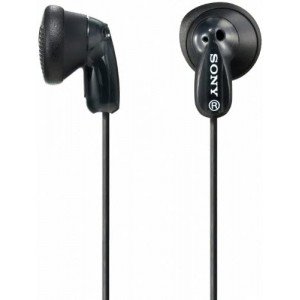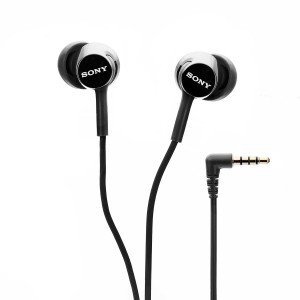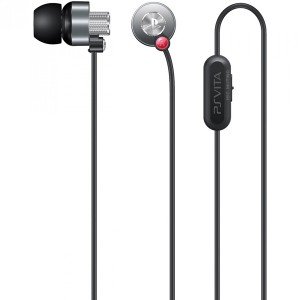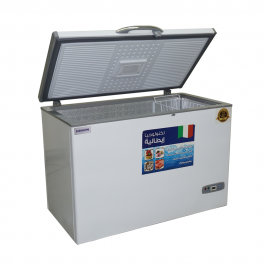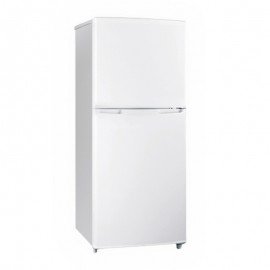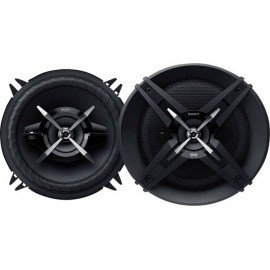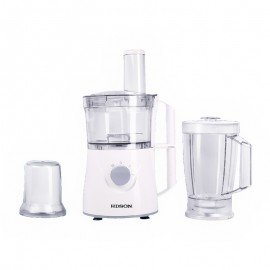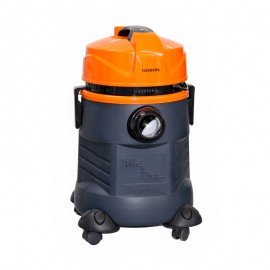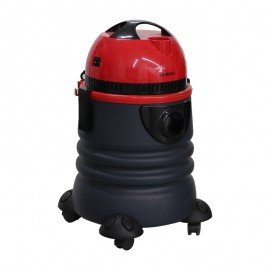Sony Stereo Headphones MDR-EX1000 - MDR-EX1000 - The cables used in the EX1000 is a 7N-OFC Litz cord with extremely high purity (99 - Audio
OverView
Accessories (4/5)Item specifics
- Microphone: All directions
- Wireless: Not Supported
Product Description
Accessories (4/5)
Sony Hybrid silicone tips (6 sizes), Hybrid silicone+foam tips (3
sizes), and carrying case (Note: US version includes an EX600 cable; non-US
version ships with a nicer 4′ cord plus a shorter 2′ cable)
Build Quality (4.5/5) – The EX1000 housings are constructed of
magnesium and plastic and styled in the typical Sony manner, with the driver
positioned vertically outside of the ear. The detachable cable is held in place
by a threaded bit, which seems pretty fool-proof except that I found myself
gripping the threaded bit when removing the earphones, thereby unscrewing the
cable a bit each time. The cord itself feels slightly underwhelming for a $500
product. It is very flexible but a little thinner than the Ortofon e-Q5 cord.
The “memory wire” section is likewise very flexible, so it is more of a
“suggestion wire” in practice. It can take a bit of time to settle into the
desired shape and doesn’t retain form very well under its own weight. The cord
is terminated with a slim 3.5mm L-plug
Isolation (2.5/5) – The nozzles of the EX1000 seem rather long
but the earphones are not well-designed for deep insertion. Isolation is
mediocre with the standard Hybrid eartips and very slightly better with the
supplied foam-stuffed tips. Wind noise can be an additional issue when used
outside
Microphonics (5/5) – The native wear style is over-the-ear and
cord noise nonexistent in the soft cable
Comfort (4/5) – Though housings designed around
vertically-positioned drivers often feature angled nozzles or other ergonomic
improvements, the EX1000 is actually a straight-barrel earphone. It is quite
large and tends to protrude farther than most earphones when worn, looking a
bit like the ridiculous PFR-V1. On the upside, the long nozzles position the
driver far enough away from the ear not to cause discomfort. The fit is not as
secure as with most other high-end monitors but the soft memory wire works well
enough in conjunction with the cable cinch. Still, I would prefer a little more
‘memory’
Sound (9.3/10) – The MDR-EX1000 slots in above the
studio-oriented MDR-EX800ST/MDR-7550 in Sony’s lineup, competing directly with
Sennheiser’s IE8 and JVC’s FX700 for the title of top consumer-oriented
dynamic. Never having heard Sony’s previous flagship, or indeed any model
higher up than the lowly EX300, the EX1000 was a complete mystery to me. What I
found was a truly top-tier dynamic-driver earphone with a slight – but not
unpleasant – treble tilt.
The low end of the EX1000 is accurate and controlled In typical high-end dynamic-driver fashion, it
is detailed and textured without losing body or fullness – clean, but
relatively soft in the way notes are presented. There is no bloat and while the
depth is not as immense as with the Monster MD or JVC FX700, the EX1000 is not
severely rolled-off, either. Compared to the VSonic GR07, the Sonys skimp on
speed just a little bit in favor a smoother and slightly softer presentation.
The warmer, boomier Sennheiser IE7, on the other hand, is left completely in
the dust by the bass control and detail of the EX1000. Not a bad tradeoff at
all and one of my very favorite bass presentations among all universals.
The midrange of the EX1000 is neutral-to-bright, with a slight gain
in emphasis towards the top. It is balanced very well with the bottom end,
which is not quite something I can say for Audio-Technica’s dynamic flagship,
the CKM99. The GR07, on the other hand, is a touch less prominent in the
midrange, sounding flatter across the spectrum and slightly more neutral in
tone than the EX1000 – not a huge surprise considering its pro-oriented tuning.
The ATH-CK10 also sounds a bit flatter through the low end and midrange but
treads on the brighter side of neutral, just as the EX1000 does, albeit without
the benefit of dynamic-driver fullness. As expected, bass bleed is nonexistent
with the Sonys and the smoothness is very impressive. The EX1000 is easily
smoother and lusher than the GR07 and nudges the warmer, less clear, and
noticeably less textured IE7 on both counts. Clarity is top notch, as is
resolution, and there is only a very small bit of microdetail missing compared
to top-tier BA-based earphones such as the CK10 and 1964-T. Overall, the
detailing of the Sonys is very good but not very aggressive, which allows the
earphone to remain extremely refined and liquid. The overall refinement is especially
obvious next to a lesser dynamic such as the Sennheiser IE7, which lacks
clarity and detail compared to the EX1000 and loses out by a fair margin in
overall realism. Only in comparison to the 6-driver, custom-molded, hugely
expensive UM Miracle does the EX1000 start to sound a little thin and lacking
in note articulation.
The EX1000 picks up emphasis towards the upper midrange and treble
but manages to keep its top end in control far better than the CKM99 does.
Despite the moderate amount of emphasis, the EX1000 is only a hair hotter than
the GR07 and manages to remain extremely smooth and refined without giving up
crispness or resolution. It is not harsh and almost never sibilant. Over long
listening sessions, the EX1000 can be a little more fatiguing than the GR07 but
again not due to harshness or sibilance. Rather, it is the overall tilt towards
treble that may grow tiresome for some listeners. Coming from the CK10,
however, I wasn’t at all offended by it, though I prefer my treble emphasis higher
up. On the upside, the EX1000 does an excellent job of conveying treble energy,
which laid-back dynamics such as the RE262 and DDM2 simply cannot do.
Interestingly, top end is only on-par with the GR07 in dropping off a bit
earlier than my CK10.
Whereas the signature of the EX1000
is lively and energetic, the presentation follows a more laid-back
approach. Its soundstage is not quite the widest in absolute terms, but it is
very spacious, airy, and open. There is not a hint of the confined, closed-in
feel prevalent among stage monitors – the 1964-T, for example, sounds downright
intimate in comparison. Surprisingly, the same can be said for the
dynamic-driver Sennheiser IE7, though to a slightly lesser degree – the
Sennheisers sound constrained and congested next to the Sonys. At the same
time, the soundstage of the EX1000 is layered better than that of the GR07. The
EX1000 also has an upper hand in dynamics, timbre, and overall refinement,
though the GR07 is admittedly a bit more neutral in tone. Imaging and
positioning are generally good but lag slightly behind a couple of the top-tier
armature IEMs I’ve heard. Those who want to be enveloped by the presentation
will not get that ‘on stage’ feel with the EX1000 – the EX1000 tends to
distance itself slightly and offers a higher degree of left-right separation. A
stage monitor such as the UM3X, SM3, or 1964-T will give the on-stage feel in
spades for those who require it. Personally, I do find that more coherent and
centralized imaging provides a more realistic and involving listening
experience but only my UM Miracle is capable of making that highly obvious in
the Sonys without sacrificing airiness or soundstage size.
Value (8/10)
Blisteringly expensive when
first announced, the Sony MDR-EX1000 has since dropped enough in price to
compete with other top-tier universal dynamics. In terms of sheer performance,
Sony’s flagship readily asserts its dominance over the hi-fi mainstays – the
newly-developed liquid crystal polymer driver is one of the best dynamic transducers
I’ve come across, alongside those used by HiFiMan and JVC, and the tuning
showcases its abilities beautifully. The sound is clean, quick, airy, and
dynamic – everything a high-end earphone should strive toward. The design is
reminiscent of the higher-end Sony monitors of yesteryear but introduces
replaceable cables and native over-the-ear fitment. Isolation is only moderate
and wind noise can be an issue but those who are willing to suffer through the
fit and aesthetics of the thing will be rewarded with what may be the finest
dynamic-driver universal on the market.






